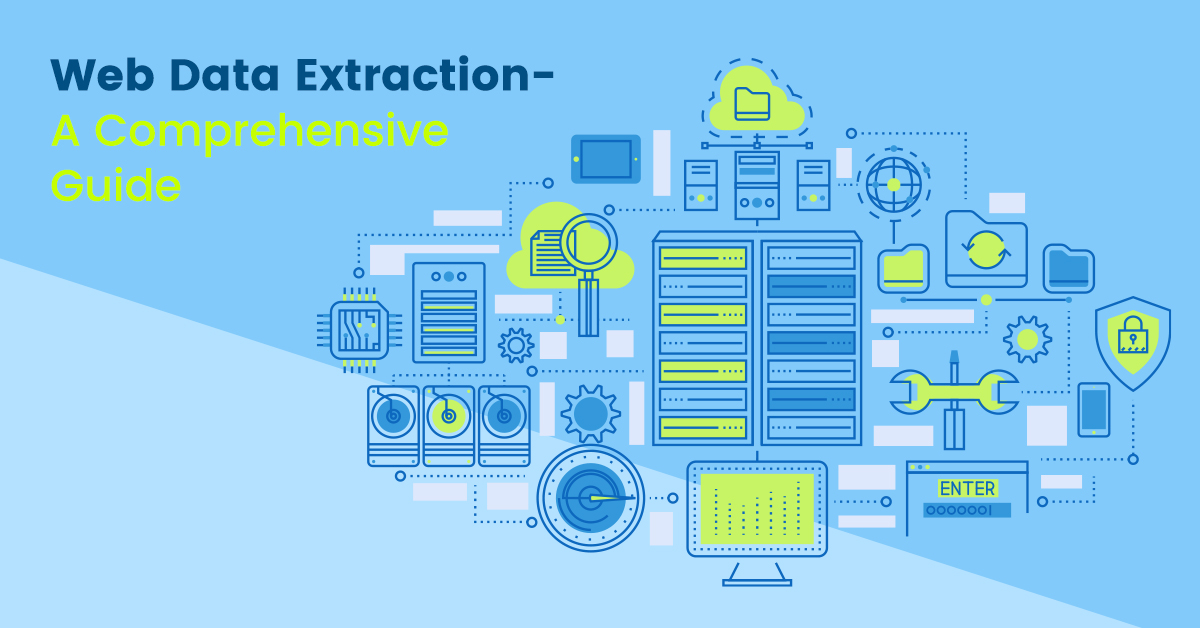Web data mining is a method for obtaining enormous volumes of data from online websites. The only way to access the information on websites is through a web browser; it is more complicated to download the information. On the other hand, the online is the most extensive collection of free data, and since the Internet’s beginnings, this data has been expanding at exponential rates.
Web data benefits e-commerce sites, media corporations, research organizations, data scientists, and the government. It may assist the healthcare sector with continuing research and disease outbreak forecasting.

Think about the information readily accessible in a structured style, ready for analysis, on classifieds websites, real estate portals, social networks, retail sites, online stores, etc. Although some websites offer APIs, they usually have limitations and aren’t trustworthy enough. Most websites cannot store their data in local or cloud storage.
You can accomplish this automatically with web scraping, and it’s far faster and more accurate. Similar to how a web browser would interact with websites, a web scraping arrangement stores the information in a storage system rather than displaying it.
Defining Web Data Mining
Web data Mining is the process of automated programs copying large amounts of data. Depending on how individuals refer to it, it goes by various names: web scraping, data scraping, and data crawling, to name a few. You may store the data you’ve “extracted” (copied) from the Internet to a file on your computer or a database.
Benefits of Web Data Mining
There are several advantages for businesses in using web data mining. It has a broader range of applications than you may think, but highlighting just a handful would be sufficient.

-
Competitor Price Monitoring
Web data mining automates competitor price monitoring by allowing e-commerce companies to receive updates on the most recent pricing of rivals’ items.
An e-commerce firm can get price change data through web data mining as it happens, such as in real-time or close to real-time, regularly (daily, weekly, or intraday), or on demand, at the company’s request.
To remain ahead of the competition, e-commerce businesses may change their marketing strategy and make educated pricing decisions for their items using the information they learn from extracting competitor prices.
Competitive data gathered through price monitoring may be crucial for your e-commerce company to survive and grow in a cutthroat industry.
-
Market Analysis
The proliferation of businesses on the Internet portends more intense competition among merchants. Due to the ease of entrance made possible by the magic Internet, almost anybody may launch their own business as long as they get online. You may do more than reduce your price or start advertising campaigns to differentiate your company from the competition and maintain sustainable development. In the beginning, they could be beneficial for a company. It is essential to monitor the actions of other players and adjust your strategies accordingly in response to the ever-changing environment.
-
Competitor Analysis
According to a study, there are over 12–24 million online retailers worldwide. That’s a significant number, not just on paper but also in real life. Companies and brands are battling it out for consumers’ attention. To advance and strive, being present at all levels is crucial.
In general, monitoring the competition was more complex until the advent of web scraping technologies. Web crawlers advance the game with real-time competitor information. Web spiders and other tools from Website Scraper can assist you in closely observing your competitors’ activity. Businesses may also learn more about advertisements, social media activity, news releases, marketing plans, catalogs, etc. It gives them the advantage in a situation when there is competition.
-
Brand Monitoring
Every company recognizes the need to put the client’s needs first to develop. Having a good reputation is advantageous for a brand to thrive in a competitive industry. Many businesses depend on web scrapers to survive in a highly competitive market. They utilize web crawling technologies to track mentions of the brand and product on well-known social media platforms, forums, e-commerce sites, etc. It enables them to keep informed of client feedback and voices while resolving problems that might damage the brand’s reputation. A company that prioritizes its consumers will undoubtedly move up the growth curve.
-
Generating Leads
Without question, one of the critical abilities to expanding your business is generating more leads. However, most salespeople still use a manual, conventional method to get online leads. What a classic case of squandering time on meaningless details.
To get leads, savvy salespeople use web scraping technologies, scouring social media, online directories, websites, forums, etc. This allows them to spend more time working with their potential clientele. Just let your crawlers handle this tedious and pointless lead-copying activity.
Working on Web Data Mining
After learning how a web data mining tool might help you, you should construct one yourself to reap the rewards of this method. Before beginning your trip, it’s crucial to comprehend how a crawler functions and the foundations of websites.

- Using programming languages, create a crawler, then input the website URL you wish to scrape. It requests HTTP to the website’s URL. In response to your request, the website returns the content of the pages if it gives you access.
- Only half of the web scraping involves parsing the webpage. The scraper looks through the website and decodes an HTML tree structure. The tree structure is a navigator to guide the crawler through the web structure to find the contents.
- The web data mining program then pulls the data fields for scraping and storing. Finally, when the extraction is complete, select a format and export the scraped data.
Although web scraping is simple, non-technical folks will need help developing one. Fortunately, the emergence of big data has led to the availability of several free web data mining tools.
Searching for Reliable Data Extraction Sources

-
Keep clear of websites with a lot of broken connections
Links act as the Internet’s connective tissue. A web data mining project should avoid using a website with many broken links. Poor site maintenance is evident, and visiting is not advisable as it may not be a pleasant experience. For starters, a damaged connection in the etching process might cause a scraping setup to stop. For anyone serious about the data endeavor, this would eventually interfere with the data quality, which should be a deal-breaker. You would be better off using an alternative source page with more accurate housekeeping and comparable data.
Regarding web crawling, finding fewer complicated sites is always preferable. Although it could occasionally not be possible, it is preferable to avoid sites with intricate and dynamic procedures to maintain a consistent crawling operation. Stay away from websites that use a lot of dynamic coding. Since dynamic websites regularly change and are challenging to get data from. A significant backlog may develop in maintenance.
-
Data quality and timeliness
Choose current and relevant sources for your web data mining project to succeed. When selecting sources for web data mining, one of your top considerations must be the caliber and freshness of the data. For the information you gather to be of any use at all, it must be current and pertinent to the present. To determine how recent the data is, look at the last changed date in the site’s source code.
What are the Legal Factors of Data Crawling?
People who are unfamiliar with the notion of web data mining view it through a clouded lens. Let’s clear things up: Web scraping or crawling is not illegal or unethical. How a crawler bot gathers data from a website is identical to how a human visitor would read the stuff there. For instance, Google Search uses web crawling, and we never hear anybody accuse Google of doing anything even somewhat wrong. However, it would help if you abode by some guidelines while scraping websites. You aren’t breaking the law if you abide by these guidelines and act ethically online as a bot. The guidelines are as follows:
- Observe the target site’s robots.txt file.
- Verify that you are adhering to the TOS page.
- Do not duplicate the data offline or online without the site’s consent.
- When crawling a website, you are fully secure if you adhere to these guidelines.
Conclusion
Here, we’ve discussed the vital elements of web data mining, including the approaches to get web data and recommended practices—numerous corporate applications and the procedure’s legal components. The operational approach in business is becoming more and more data-centric. It’s time to assess your data needs and begin collecting pertinent data from the web to increase productivity and income in your company. If you become stranded while traveling, this information should assist you in moving forward.


































